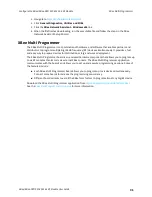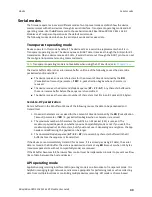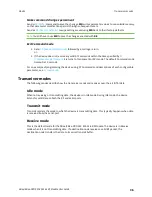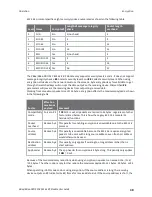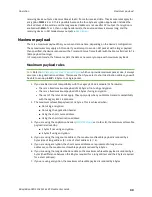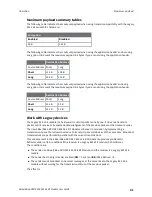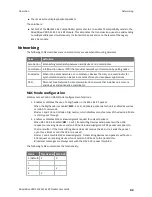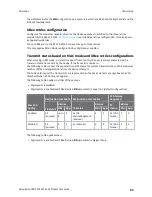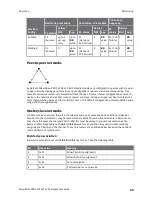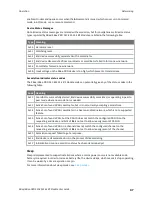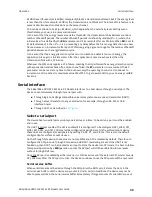
Operation
Networking
XBee/XBee-PRO S2C 802.15.4 RF Module User Guide
45
By default,
A1
is 0, which disables association and effectively causes an end device to operate in peer-
to-peer mode. When bit 2 is set, the end device associates to a coordinator. This is done by sending
out an active scan to detect beacons from nearby networks. The active scan selects one channel and
transmits a Beacon Request command to the broadcast address and the broadcast PAN ID. It then
listens on that channel for beacons from any coordinator operating on that channel. The listen time on
each channel is determined by the
SD
parameter. Once that time expires, the active scan selects the
next channel, repeating until all channels have been scanned.
If
A1
is 0x04 (bit 0 clear, bit 1 clear, and bit 2 set), then the active scan will reject all beacons that do
not match both the configured PAN ID and the configured channel. This is the best way to join a
particular coordinator.
If
A1
is 0x05 (bit 0 set, bit 1 clear, and bit 2 set), then the active scan will accept a beacon from any
PAN ID, providing the channel matches. This is useful if the channel is known, but not the PAN ID.
If
A1
is 0x06 (bit 0 clear, bit 1 set, and bit 2 set), then the active scan will accept a beacon from any
channel, providing the PAN ID matches. This is useful if the PAN ID is known, but not the channel.
If
A1
is 0x07 (bit 0 set, bit 1 set, and bit 2 set), then the active scan will accept a beacon from any PAN
ID and from any channel. This is useful when the network does not matter, but the one with the best
signal is desired.
Whenever multiple beacons are received that meet the criteria of the active scan, then the beacon
with the best link quality is selected. This applies whether
A1
is 0x04, 0x05, 0x06, or 0x07.
Before the End Device joins a network, the Associate LED will be on solid. After it joins a network, the
Associate LED will blink twice per second.
In the event that association parameters are changed after the end device is associated, the end
device will leave the network and re-join in accordance with the new configuration parameters.
Coordinator association
Coordinator association occurs if
CE
is 1 and
A2
has bit 2 set. See the following table.
Bit
Hex value
Meaning
0
0x01
Allow PAN ID reassignment
1
0x02
Allow channel reassignment
2
0x04
Allow association
By default,
A2
is 0, which prevents devices from associating to the coordinator. So, if
CE
is 1 and
A2
bit
2 is 0, the device still creates a network, but end devices are unable to associate to it.
If
A2
bit 2 is set, then joining is allowed after the coordinator forms a network.
If
A2
bit 0 is set, the coordinator issues an active scan. This means it will send out beacon requests to
the broadcast address (0xFFFF) and the broadcast PAN ID (0xFFFF). Then, it will listen for beacons.
The listen time is determined by the
SD
parameter. Then the same beacon request is sent out on the
next channel and the device listens for beacon responses on that channel. This process repeats until
each channel in the channel mask (
SC
) is scanned for
SD
time. If none of the beacons on any of the
channels return a PAN ID equivalent with the
ID
parameter, then the coordinator will use the ID
parameter for the PAN ID of the new network it forms. But, if a beacon response matches the PAN ID
of the coordinator, the coordinator will form a PAN on a unique PAN ID.
If
A2
bit 0 is clear, then the coordinator will form a network on the PAN ID identified by the
ID
parameter, without regard to another network that might have the same PAN ID.

